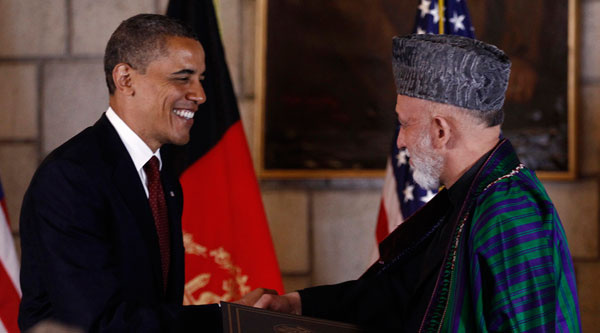Editorial
Afghanistan Security Deal

There are several reasons why the Obama administration was in a hurry to conclude a security agreement with Afghanistan. First, Obama is eager to present a long-term commitment to the security and stability of Afghanistan during a NATO summit in Chicago on May 20-21. Second, in an election year, Obama wants to show the American people that he stands by his words to bring back home the bulk of U.S. forces before the end of 2014. Cognizant of the fact that most Americans consider the situation in Afghanistan as an unpopular conflict, the U.S. president said after the signing ceremony, “I recognize that many Americans are tired of war. I will not keep Americans in harm’s way a single day longer than is absolutely required for our national security.” Third, Obama wants to indicate to U.S. adversaries, including Al-Qaeda, that the U.S. will not abandon Afghanistan.
The strategic agreement is more symbolic than substantive. It pledges the two sides to work on a more detailed agreement to be finalized in one year. It talks about U.S. annual funding to train and equip the Afghan military, but it does not give any dollar value for that purpose. Nor does the agreement spell out the number of American forces to remain in Afghanistan in the post-2014 period, giving a leeway to the U.S. to determine the number of its forces needed for different purposes in that country. It also contains a provision for amending or terminating the agreement, making it possible for future presidents of both countries to choose another path if they decide to do so.
All in all, while the strategic agreement can be used to regulate the presence of U.S. forces in Afghanistan after 2014, its existing loopholes make it difficult to consider it as a viable agreement. The U.S. should learn lessons from its long years of military involvement in Afghanistan and Iraq and leave the affairs of the region to the countries living in this neighborhood for thousands of years.

